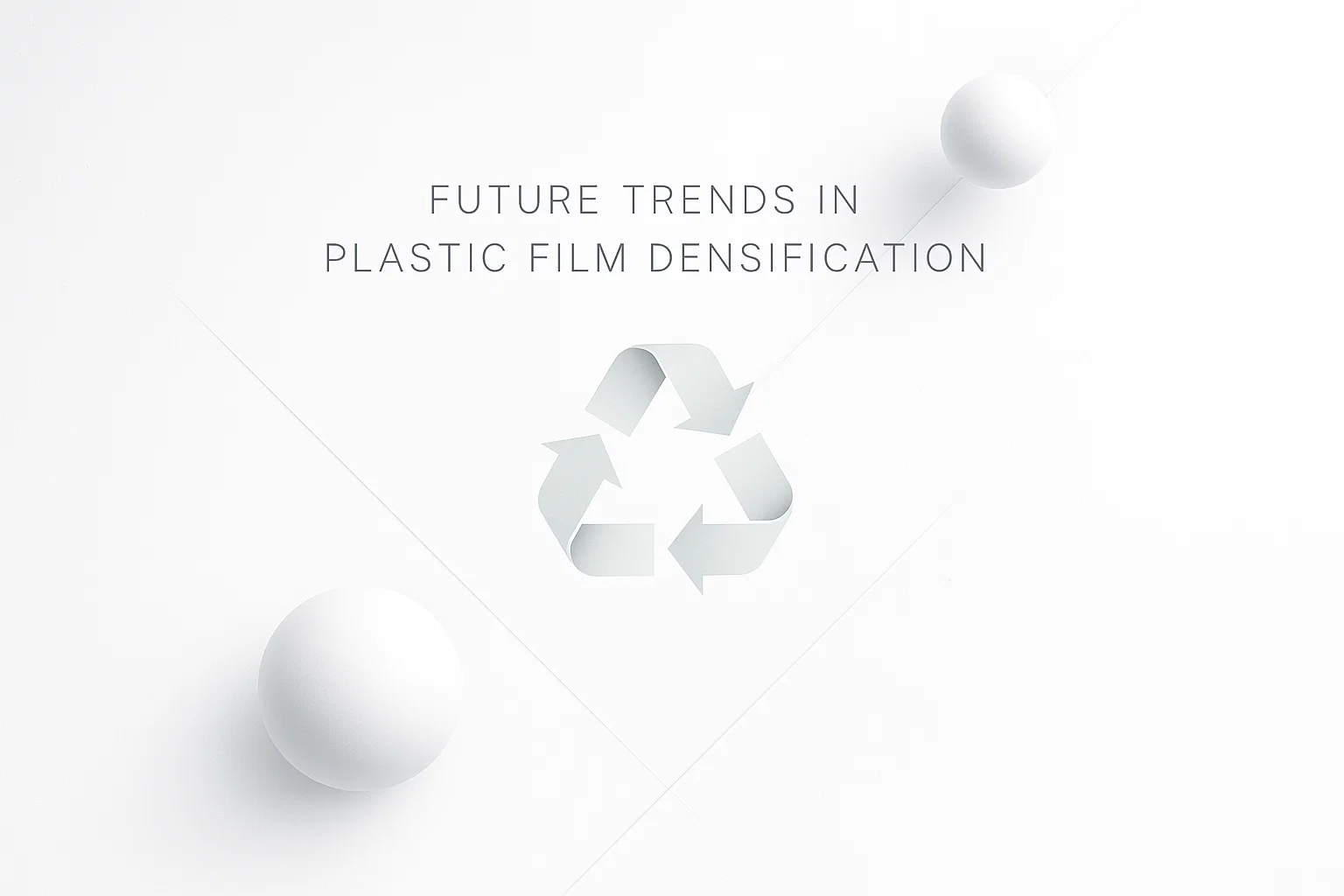Introduction
The plastic recycling industry is undergoing a transformative shift, driven by escalating global demand for sustainable materials and stringent environmental regulations. With plastic film waste—such as LDPE, LLDPE, and PP woven bags—comprising a significant portion of post-consumer and industrial refuse, efficient processing technologies are essential. Film densification equipment, including squeezer densifiers, plays a pivotal role by removing excess moisture and compacting bulky films into dense, pellet-ready forms. This not only streamlines downstream extrusion but also minimizes energy consumption and waste. As we look toward 2025 and beyond, emerging trends promise to revolutionize this sector, making recycling more viable for industry professionals and international traders. By integrating advanced features, these systems address key pain points like inconsistent feed quality and high operational costs, fostering a circular economy.
Current State of Film Densification Equipment
Film densification equipment has evolved from basic mechanical dryers to sophisticated systems that combine squeezing, friction heating, and compaction. Traditionally, centrifugal dryers or hot air systems were used, but they often left residual moisture levels of 10-20%, leading to defects in recycled pellets like voids or uneven density. Modern squeezer densifiers, such as those offered by Rumtoo, reduce moisture to as low as 1-5% while densifying the material for seamless integration into pelletizing lines.
These machines typically feature a robust screw press mechanism, where washed films are fed into a barrel equipped with a nitride-hardened screw. As the material advances, mechanical pressure expels water through perforated screens, and frictional heat aids in partial melting, forming compact lumps or granules. Key technical specifications include screw diameters ranging from 250mm to 350mm, motor powers up to 220kW, and capacities from 200kg/h to 800kg/h, depending on the model. For instance, Rumtoo’s systems are optimized for soft plastics like agricultural films and jumbo bags, ensuring low thermal degradation and high output stability.
Despite these advancements, challenges persist, including handling contaminated films and energy inefficiency in older models. Industry reports highlight that specialized equipment is crucial for film recycling due to its thin, flexible nature, which complicates shredding and drying. This sets the stage for future innovations aimed at overcoming these hurdles.
Key Applications in Plastic Recycling
Film densification is integral to complete recycling lines, bridging washing and extrusion stages. It excels in processing post-industrial waste from packaging and agriculture, converting low-density films into high-value recyclates. Benefits include reduced storage needs—densified material occupies up to 80% less space—and lower transportation costs, appealing to international traders dealing with bulk shipments. Moreover, producing uniform feed enhances pellet quality, meeting standards like those from the Association of Plastic Recyclers (APR) for bale specifications.
Emerging Technologies in Film Densification
The future of film densification equipment lies in technological integration, focusing on automation, sustainability, and scalability. By 2025, advancements are expected to include smarter systems that adapt to varying input qualities, reducing downtime and improving yield.
Automation and AI Integration
Robotics and AI are transforming plastic recycling, with densifiers incorporating sensors for real-time monitoring of moisture, density, and throughput. Adaptive control algorithms can adjust screw speed and pressure dynamically, optimizing for different film types like multilayer or contaminated materials. For example, precise material detection in densification processes enhances efficiency, as noted in recent studies on robotic enhancements. Rumtoo is at the vanguard, developing IoT-enabled densifiers that provide predictive maintenance alerts, minimizing breakdowns in high-volume operations. This trend aligns with broader industry moves toward Industry 4.0, where data analytics drive process improvements.
Energy Efficiency and Sustainable Designs
Sustainability is a core driver, with new densifiers emphasizing low-energy friction heating over traditional methods, cutting power usage by 20-30%. Innovations include modular designs for easy upgrades and materials like recycled alloys in construction, reducing the carbon footprint. Hybrid systems combining mechanical squeezing with advanced dewatering techniques, such as vacuum-assisted presses, are emerging to achieve sub-1% moisture levels without excessive heat. These align with global trends toward circular economies, where equipment supports higher recycled content in end products.
Customization for Diverse Markets
Customization is gaining traction, allowing buyers to tailor systems for specific feedstocks or capacities. Rumtoo offers bespoke configurations, such as integrating shredders or granulators, catering to international clients in regions with varying waste streams. This flexibility is vital for emerging markets in Asia and Africa, where agricultural film waste predominates.
Market Trends and Industry Demands
The plastic recycling market is projected to grow at a CAGR of 6-8% through 2030, fueled by regulations like extended producer responsibility (EPR) schemes. Demand for film densification equipment is rising, particularly for processing challenging materials like XPS or multilayer films. Trends include a shift toward closed-loop recycling, where densified films are reused in packaging with higher post-consumer recycled (PCR) content.
International trade audiences benefit from scalable solutions that comply with export standards, ensuring consistent quality for global supply chains. Challenges like fluctuating raw material prices underscore the need for efficient equipment to maintain profitability.
Buyer’s Guide: Selecting the Right Densifier
When evaluating film densification equipment, consider capacity alignment with your throughput—start with models like Rumtoo’s 300-500kg/h units for mid-scale operations. Assess moisture reduction capabilities; aim for systems achieving 1-3% levels to optimize pelletizing. Energy efficiency ratings, maintenance requirements, and integration compatibility are crucial. Look for nitride-treated components for durability, and prioritize suppliers offering after-sales support, including spare parts and training. Budget for initial costs (typically $50,000-$150,000) while calculating ROI through reduced energy and labor expenses. Test runs with your specific films can validate performance, ensuring the system handles variations in thickness or contamination.
Rumtoo’s Role in Shaping the Future
Rumtoo stands out with its commitment to innovation, offering squeezer densifier systems that embody these trends. Their latest models feature enhanced automation, energy-saving designs, and customizable options, proven in installations worldwide. By focusing on reliability and efficiency, Rumtoo helps clients achieve superior recycled pellet quality, supporting sustainable practices without compromising output.
Conclusion
Film densification equipment is poised for significant advancements, with trends in automation, energy efficiency, and customization driving the plastic recycling industry’s future. These developments not only address current inefficiencies but also align with global sustainability goals, enabling recyclers to produce high-quality materials economically. Rumtoo’s expertise in squeezer densifier systems positions it as a trusted partner for industry professionals seeking cutting-edge solutions. To explore how our equipment can elevate your operations, contact us today or request a quote at:
Embrace the future of recycling with Rumtoo—where innovation meets reliability.



